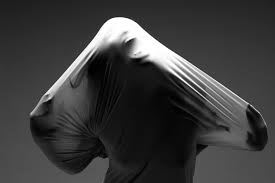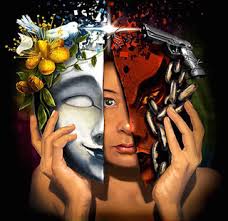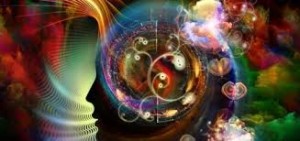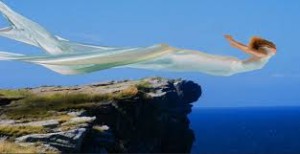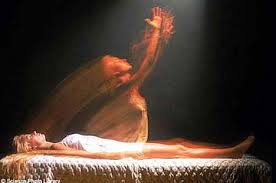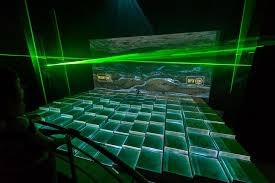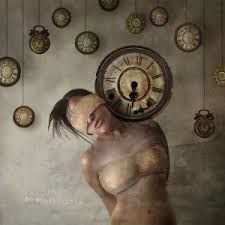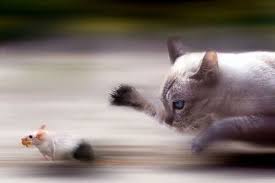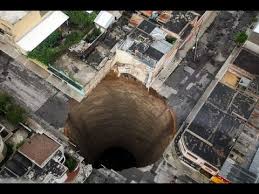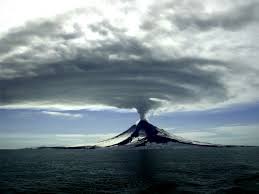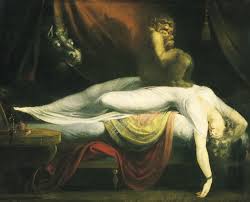Here we must part company with treasured objectivity, and enter instead a mental domain, in which it is seen that contradictions are not errors; an inner domain, in which it is seen that contradictions at one level, for at another level they are seen to be no contradictions at all.
In science as it stands, it is necessary that self-contradictions do not arise. If a hypothesis is “proven true,” then it cannot be proven false — or, of course, it was never true to begin with.
In those terms, therefore, the universe either had “a Creator,” or it had none; or it came into being as stated in the Big Bang theory, and is either constantly expanding or it is not. Evolution exists or it does not. As a rule such theories are proven “true’ by the simple process of excluding anything else that seems contradictory, and so generally our scientific theories carry the weight of strong validity within their own frameworks.
In those frameworks we have made certain classifications that now appear quite obvious. Common sense upholds them, and it seems impossible to consider reality otherwise. Yet by their nature such categories structure our experience of reality itself to such an extent that any alternate ways of perceiving life seem not only untrustworthy, but completely impossible.
Our classifications of various species appear to us as the only logical kinds of divisions that could be made among living things. Quite the contrary is the case, however. That particular overall method of separation leads to such questions as: Which species came first, and which came later, and how did the various species merge — one from the other? Those questions are further brought about by our time classifications, without which they would be meaningless.
Our classifications in such respects set up exterior divisions. Now these serve as quite handy reference points, but basically speaking they in no way affect the natural experience of those various living creatures that we refer to as “other species.”
Our specializations work as long as we stay within the framework, though then we must wrestle with the questions that such divisions automatically entail. It is perhaps difficult for us to realize that these are written and verbalized categories that in no real manner tell us anything about the actual experience of other creatures — but only note habits, tendencies, and separations of the most exterior nature.
If our purpose is to comprehend what other living creatures perceive, then the methods we are using are at the best short-sighted, and at the worst they completely defeat our purpose. For example: No matter what information or data we receive as the result of animal experimentation or dissection for scientific purposes, and no matter how valuable the results appear to be, the consequences of such methods are so distorted that we comprehend less of life than we did before.
Our present methods will simply bring us pat, manufactured results and answers. They will satisfy neither the intellect nor the soul. Since our universe springs from an inner one, and since that inner one pervades each nook and cranny of our own existence, we must look where we have not before — into reality of our own minds and emotions. We must look to the natural universe that we know. We must look with our intuitions and creative instincts at the creatures about us, seeing them not as other species with certain habits, not as inferior properties of the earth, to be dissected, but as living examples of the nature of the universe, in constant being and transformation.
We must study the quality of life, dare to follow the patterns of our own thoughts and emotions, and to ride that mobility, for in that mobility there are hints of the origin of the universe and of the psyche. The poet’s view of the universe and of nature is more scientific, then, than the scientist’s, for more of nature is comprehended.
The child, laughing with joy and awe at the sight of the first violet, understands far more in the deepest terms than a botanist who has long since forgotten the experience of perceiving one violet, though he has at his mental fingertips the names and classifications of all the world’s flowers. Information is not necessarily knowledge or comprehension.
Thoughts spring into out mind as the objective universe swims into reality — that is, in the same fashion. Diagramming sentences tells us little about the spoken language, and nothing about those miraculous physical and mental performances that allow us to speak — an so diagramming the species of the world is, in the same way, quite divorced from any true understanding.
The subjective feeling of our being, our intimate experience from moment-to-moment — these possess the same mysterious quality that it seems to us the universe possesses. We are mortal, and everywhere encounter evidence of that mortality, and yet within its framework our feelings and thoughts have a reality to us personally that transcends all such classifications. We know that physically we will die, yet each person at one time or another is secretly sure that he or she will not meet such a fate, and that life is somehow eternal.
Through such feelings the psyche breaks through all misconceptions, hinting at the nature of self and of the universe, and at that level there are no contradictions. There is no beginning or end to the psyche, either. We may say: “Granted” yet persist, saying: “In our terms, however, when did the world begin, and in what manner?” Yet the very attempt to place such an origin in time makes almost any answer distorted.
The truth is that the answers lie in our own experience. They are implied in our own spontaneous behavior — that is, in the wondrous activity of our bodies and minds.
We walk well without having at our fingertips any conscious knowledge of the inner mechanism’s activity. We may have been told, or we may have read about the body’s anatomy, and the interaction of its parts. Yet whether or not we have such information, we walk quite well. Such data therefore do not help our walking performance any.
For that matter, an athlete may have a great zest for motion and an impatience with reading, caring not what within the body makes it move as long as its performance is superb — within an invalid with great book knowledge about all of the body’s parts is quite unable to physically perform in a normal manner.
Our body knows how to walk. The knowledge is built-in and acted upon. The body knows how to heal itself, how to use its nourishment, how to replace its tissues, yet in our terms the body itself has no access to the kind of information the mind possesses. Being so ignorant, how does it perform so well?
If it were scientifically inclined, the body would know that such spontaneous performance was impossible, for science cannot explain the reality of life itself in its present form, much less its origins.
Consciousness within the body knows that its existence is within the body’s context, and apart from it at the same time. In ordinary life during the day consciousness often takes a recess, so to speak — it daydreams, or otherwise experiences itself as somewhat apart from the body’s reality. At night, in sleep, the self’s consciousness takes longer, freer recesses from physical reality, and does this as spontaneously as the body itself walks. These experiences are not hypothetical. They happen to each person. On such occasions, each person is to some extent aware of a kind of comprehension that is not dependent upon the accumulation of data, but of a deeper kind if experience and direct encounter with the reality from which the world emerges.
This is the kind of wordless knowledge the body possesses, that brings forth our physical motion and results in the spectacular preciseness of bodily response. It is, then, highly practical. In our terms, the same force that formed the world forms our subjective reality now, and is a source of the natural universe.
Exploring those realities lovingly will bring us into direct contact with inner dimensions of our being, providing intuitive understandings that are of great import.
The motion of the universe appears in the motion of our own intimate experience, and in that seemingly most nebulous area the answers will be found.

















